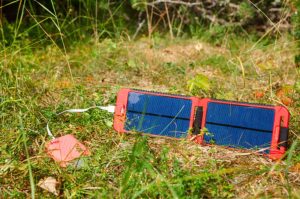Is a 100-Watt Solar Panel Enough to Charge a 100 Ah Battery
The sun is a great source of clean energy. What’s even better is that you can store this energy in …
What Can a 60-watt Foldable Solar Panel Power
If you’ve ever gone camping, hiking, or just wanted to experience life off the grid, one of the best ways …
What can a 100-Watt Solar Panel Power
More and more people are switching to solar when it comes to generating their own electricity, as the cost of …
What Can a 30-watt Solar Panel Power
A 30-watt solar panel is a basic and small-sized solar panel. It’s perfect for DIY projects for beginners when using …
What Direction Should Solar Panels Face?
If you’re thinking of installing solar panels on your home, there are a few things to consider. How much sun …

Do Solar Panels Charge On Cloudy Days
Solar energy produced from a solar panel is determined by how many photons from the sun strike the solar cell, …

Best 100 Watt Portable Solar Panels
Solar Panels offer the convenience of power outdoors without having to go to a power outlet. You only need the …